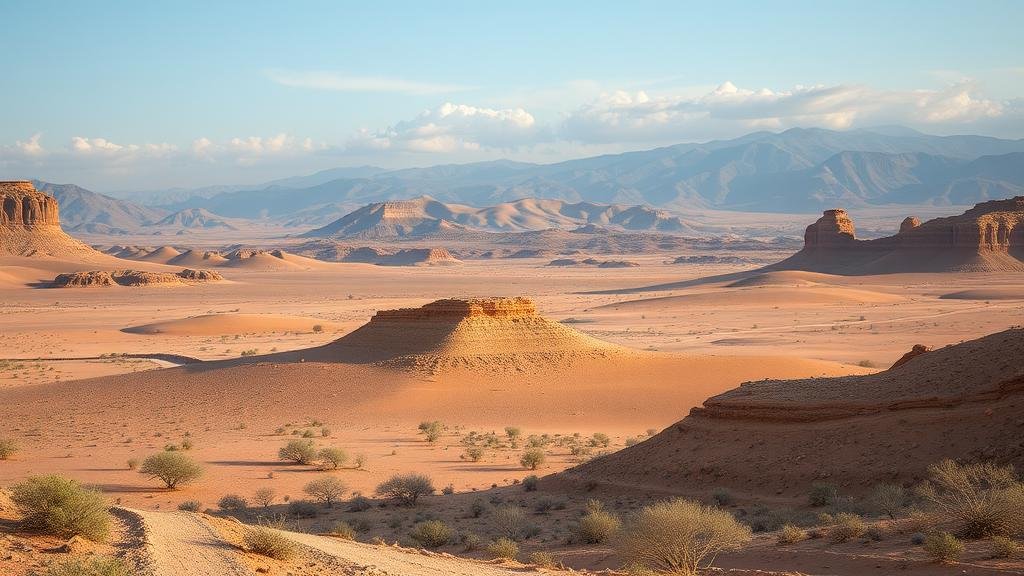Exploring the remote deserts of western China for evidence of Silk Road cities erased by time.
Exploring the Remote Deserts of Western China for Evidence of Silk Road Cities Erased by Time
Western China, with its vast and arid landscapes, was once the lifeblood of the Silk Road, facilitating trade, cultural exchange, and the spread of ideas between East and West. Today, much of this historical tapestry remains buried beneath the sands of time, waiting to be rediscovered. As we venture into the remote deserts of this region, we find tantalizing hints of cities that flourished centuries ago, now little more than a whisper on the wind.
The Silk Road: A Brief Overview
The Silk Road was not a single road but a complex network of trade routes that connected the East and West from the 2nd century BCE until the 14th century CE. Stretching over 4,000 miles, it linked China through Central Asia to Europe, facilitating trade in silk, spices, precious metals, and other goods. Despite its significance, many early cities along the Silk Road have experienced extensive degradation due to natural erosion and human activity.
Key Deserts of Western China
The primary deserts to consider in the search for Silk Road remnants are:
- Taklamakan Desert: Known as the Sea of Death, this desert has been one of the most inhospitable yet pivotal regions for ancient trade.
- Gobi Desert: Spanning northern China and southern Mongolia, the Gobi hosted key trading towns that facilitated the exchange between cultures.
- Kumtag Desert: This lesser-known desert houses several important archaeological sites related to the Silk Road.
Notable Silk Road Cities and Their Fate
Several cities that thrived due to their position on the Silk Road have become ghost towns, their remnants slowly dismantled by time:
- Loulan: Once a flourishing oasis, Loulan was a key stop for merchants but was abandoned by the 9th century. Its ruins have been found near the modern-day Lop Nur, revealing remnants of walls, pottery, and textiles.
- Kucha: Located along the northern route of the Silk Road, Kucha was known for its Buddhist manuscripts. Archaeologists have uncovered ancient stupas and murals, indicating its rich cultural history.
- Turfan: This city provided access to crucial trade routes and was famous for its irrigation systems. Today, its relics can be found in the form of ancient soils and artifacts, illustrating its desert civilization.
Challenges of Archaeological Exploration
Exploring the vast deserts of Western China to uncover Silk Road evidence presents several challenges:
- Climate Conditions: Extreme temperatures and harsh wind erosion impede excavation and preservation efforts.
- Political Restrictions: Certain areas may be off-limits due to government regulations and security concerns, limiting access to sites of interest.
- Resource Mobilization: Archaeological expeditions require substantial funding and expertise, which may not always be available.
The Importance of Modern Technology
Recent advancements in technology are aiding the search for lost Silk Road cities:
- Satellite Imaging: High-resolution satellite imagery allows researchers to identify ancient pathways and structures that are not visible from the ground.
- Ground-Penetrating Radar (GPR): This technology provides insights into subsurface structures without the need for invasive excavations, preserving the archaeological context.
- Drone Surveys: Drones assist in mapping and assessing areas that are challenging to reach on foot, making large-scale explorations more feasible.
Real-World Applications and Implications
The exploration of these ancient cities has substantial implications for multiple fields:
- Cultural Heritage Preservation: Uncovering lost Silk Road cities can help preserve cultural heritage, providing insights into historical trade practices and lifestyles.
- Tourism Development: Promoting these archaeological sites can enhance local economies through cultural tourism.
- Academic Research: Findings contribute to our understanding of ancient civilizations and their interactions, informing historical and cultural studies globally.
Actionable Takeaways
If you are inspired by the rich history and the ongoing discoveries in the deserts of Western China, consider the following actions:
- Stay informed about ongoing archaeological projects and expeditions through credible sources.
- Support organizations dedicated to heritage preservation and archaeological research.
- Plan visits to museums or educational programs that offer insights into Silk Road history and its impact on global culture.
As we delve deeper into the sands of Western China, each discovery reinforces the significance of the Silk Road not only as a trade route but as a bridge between cultures. The exploration of these lost cities reflects our intrinsic desire to understand our past, ensuring that the stories of those who came before us are not completely lost to time.



